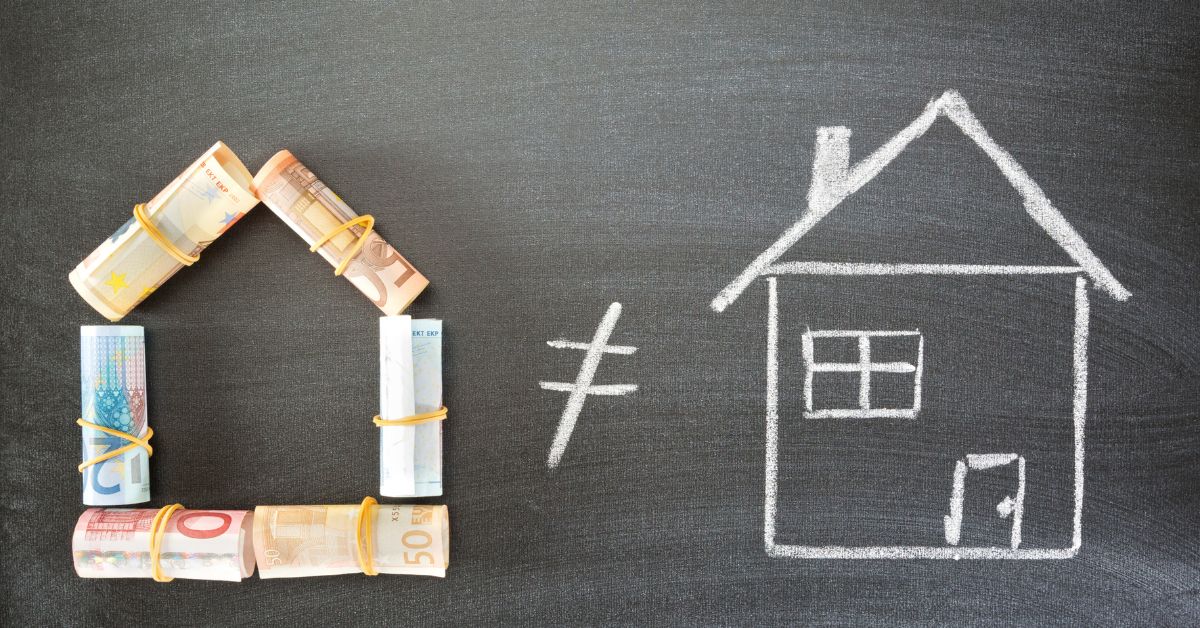Knowing when and how to sell your USDA loan home can significantly impact your financial future. The answer lies in understanding a complex web of requirements, terms, and market factors intersecting in this pivotal decision.
This article unpacks the mysteries surrounding this loan type and explores the perfect moment when the home should be sold. Having worked extensively in this field, I can attest that this exploration may lead to insights that fundamentally change your view about the loan.
What is a USDA Loan?
Originally known as the Rural Development Guaranteed Housing Loan, a USDA loan is a special type of mortgage aid given to qualified rural and suburban homeowners. It’s provided by the United States Department of Agriculture office and targeted towards helping low to moderate income families and individuals achieve their homeownership dreams.
USDA Loans vs. Conventional Loans

Prospective home buyers may want to choose between USDA and conventional loans when considering financing options. Every loan type has unique guidelines and benefits tailored to various financial situations and preferences.
Here’s a table that compares these two loan alternatives:
| Parameters | USDA | Conventional |
|---|---|---|
| Down Payment | None (100% financing) | Typically 20%, but it can be as low as 5% |
| Mortgage Insurance | Lower than Conventional | Required if the down payment is less than 20% |
| Location | Restricted to rural and suburban areas | No restrictions |
| Income Limits | Yes, it varies by region and household size | No |
| Credit Score | More lenient, typically accepts lower scores | Strict; higher credit scores often needed |
| Loan Limits | No | Yes, it varies by county and unit size |
| Interest Rates | Often lower than conventional | Varies by lender and borrower’s creditworthiness |
Requirements for the Loans
Despite their advantages, these home loans have firm conditions that must be met. Homeowners must know these prerequisites to position themselves better.
Home Location
One of the critical USDA guidelines for these home loans is the property’s location. The loans were designed to aid rural and suburban development. The property you’re eyeing should fall within the definition of a “rural” area. This typically includes municipalities with a population under 35,000, though exceptions exist. It’s essential to check the Rural Development Property Eligibility map, to verify if the location of the house you’re considering qualifies.
Income Eligibility
Another significant component is the borrower’s income. To qualify, you must demonstrate a stable and dependable income. Besides, your income should not exceed the set limit for your specific area. Different maximum income limits are set based on the area’s median income and household size. The aim is to ensure the loans target only individuals and families with low to moderate incomes.
Property Usage
There are restrictions on how the property will be utilized. The property acquired with the loan should serve as the borrower’s primary residence and not be used for income-generating activities. For instance, it shouldn’t be used for commercial farming or renting out to others.
Fulfilling Credit Obligations
While these loans are reputed for having lenient credit prerequisites compared to traditional mortgage loans, a satisfactory credit history is still necessary. Borrowers must demonstrate their ability to fulfill their credit obligations promptly. Although there is no set minimum credit score, most lenders often demand a score of at least 620.
Home Condition
The home you’re considering should meet particular habitability and safety standards. Homes must be modest in size, design, and cost. Further, they must be in good condition and free from health and safety hazards.
These prerequisites set a clear path forward when considering the loan. However, there’s an often-discussed aspect related to how long it takes to approve a USDA loan. In essence, the approval time is subject to factors such as the borrower’s creditworthiness and the completeness of the application.
The Primary Residence Clause
Borrowers obtaining the loan must use the property as their main residence. Consequently, one might wonder, can you use a USDA loan for a second home? The answer to this question is yes but under specific restrictions. In fact, the loan occupancy requirements dictate that you must occupy the property within 60 days of closing.
Also, a 502 or 504 loan cannot finance the existing residence. Therefore, having one renders you ineligible for obtaining an additional USDA loan.
When to Sell USDA Loan Home
When applying for a USDA loan, borrowers guarantee that they will use the property as their primary residence. However, unforeseen life events can occur, forcing the borrower to move due to a growing family or a change in employment.
Selling a home under a USDA loan is akin to disposing of a regular property and other government-backed loans such as Federal Housing Administration (FHA), or Veterans Affairs (VA). However, it’s essential to understand that disposing of the property before meeting the USDA loan occupancy requirements can complicate the activity.
Flexibility with USDA Guaranteed Loans

With a USDA 502 Guaranteed loan, you can relocate and market your house anytime. There are no prepayment or early payoff penalties associated with this mortgage alternative. That means your loan can be sold or paid off without restrictions or fees.
However, buyers may occasionally face restrictions when using grants or bond money with a USDA loan. It’s essential to inquire ahead of time with the agency.
The Best Time to Sell
Deciding on the best time to dispose of under a USDA home loan program comes down to market conditions and personal circumstances. Historical data points towards spring and early summer as ideal times for real estate transactions.
However, disposing of a home under this mortgage alternative largely follows the traditional process. For clarity, let’s break down the procedure into five main steps:
Step 1: Prepare Yourself
Before disposing of your loan home, review your loan status and ensure you comply with the relevant loan restrictions. Prepare the house for sale by doing necessary repairs and cleaning to make the house more appealing to potential homeowners.
Step 2: List Your Property
Collaborate with a real estate agent familiar with this loan option and rural property investment. The agent will help you set a competitive price and list your home on various platforms. Utilize their expertise to increase your visibility.
Step 3: Negotiate Offers
Once the buyers start showing interest, you’ll receive offers. This is a negotiation step where you may get a low first offer, but don’t let this demoralize you. Having a real estate agent by your side will assist in this negotiation stage.
Step 4: Enter into a Sales Agreement
After settling on the price, the next phase is to get into a contract. The contract should outline the terms and conditions of the sale. Ensure you meet the prerequisites for a short sale if you intend to pursue a pre-foreclosure.
Step 5: Close the Process
This stage involves fulfilling all contractual obligations, settling any remaining mortgage balance on your USDA loan program, and transferring the title to the buyer. Talking to a real estate attorney to guide this procedure and determine if the transaction is legally binding is advisable.
Throughout these steps, communication with your lender is crucial. Ensure they are informed of your decision and seek their guidance throughout the procedure.
Additional Considerations

Disposing of your USDA loan home invites additional considerations. For example, life changes, such as getting married after a USDA loan, could impact your living arrangements and the decision to dispose. Additionally, early repayment or prepayment penalties may apply if you put your home on the market before a certain period – typically within the first five years of the loan term.
With a strong foundation in financing, I can confidently say that timing and market conditions are critical. Understanding particular procedures, such as home closing and the potential for short sales, is also vital. Always remember to consider additional influencing factors linked with your circumstances. Thus, disposing of your loan home may seem challenging, but knowing these elements allows you to navigate it confidently and carefully.
Frequently Asked Questions About When Can I Sell My USDA Loan Home
What happens if you make more money after getting a USDA loan?
If you start earning more money after securing a USDA loan, it won’t affect your existing loan. The income evaluation is only done when applying for the loan to ensure compliance with the USDA’s income needs. Any subsequent increase in income after loan approval and closing will not impact your loan terms or force you to refinance.
Does USDA have a 90-day flip rule?
No, the USDA doesn’t have a 90-day flip rule. The rule is primarily associated with FHA loans, stipulating that the seller must own a property for at least 90 days before a buyer can purchase it with an FHA loan. USDA loans don’t have this rule, giving buyers more flexibility.
What happens to a USDA loan when the borrower dies?
The USDA loan is not automatically canceled or paid off if a borrower dies. The borrower’s estate would typically need to pay the loan. If the deceased borrower were the only one on the loan, heirs would have to refinance the home into their name. If there is a co-borrower, they can continue making payments or refinance.






